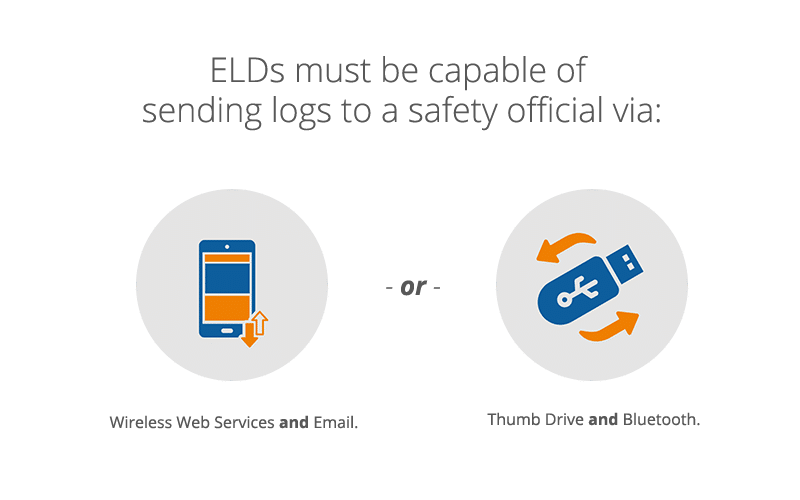The ELD rule has been in effect for nearly a year now, but there is still confusion among drivers about the devices installed in their vehicles. In fact, DOT officials tell us it’s the biggest problem they run into during inspections. One of the most common misconceptions is that because an AOBRD (Automatic On Board Recording Devices) is an electronic device that tracks HOS, it’s an ELD. But that’s not the case.
The ELD rule, which went into effect in December 2017, mandates that anyone who maintains HOS records with paper logs must upgrade to an ELD. However, there are carriers and drivers who are still using grandfathered AOBRDs. Those drivers will be allowed to continue using them until December 16, 2019. At that point, everyone who is required to track Hours of Service will be required to use an ELD.
An ELD must meet new and more rigorous technical specifications compared to what was required in the 1988 AOBRD Rule (49 CFR 395.15). Let’s go over some of the main differences between an AOBRD and ELD.
AOBRDs are required to have “integral synchronization,” but the term was never clearly defined in the Federal Motor Carrier Safety Regulations under the AOBRD rule.
The ELD rule covers it extensively, saying that the device must be connected to the vehicle’s ECM (electronic control module) so it can track when the engine is on, how long it has been on, when the vehicle’s moving, and exactly how many miles have been driven based on odometer readings.
Vehicles built before the year 2000 are exempt from this requirement.
While both AOBRDs and ELDs are required to record the vehicle’s location, there are different requirements as to when it must be done.
AOBRDs are required to record a vehicle’s location every time there’s a change in duty status, but it doesn’t have to be automatically logged by GPS. Drivers are permitted to manually log their location.
With an ELD, a vehicle’s location must be automatically recorded at several different times:
When driving under personal conveyance, the ELD’s location accuracy drops from a 1-mile radius to a 10-mile radius to ensure the privacy of the driver’s exact location. This privacy requirement is not included in the AOBRD rule.
While the AOBRD rule only mandated that the device be able to interact with a printer, the ELD rule goes into more detail about how the device sends logs to safety officials. The device must use one of these two options to share data:

This was another requirement added by the ELD rule that wasn’t touched upon in the 1988 AOBRD rule. The ELD rule requires that if there are unassigned driving times or miles, a warning must pop up when someone logs into the device. Drivers will then have to indicate whether the unassigned records belong to them or not.
Carriers should also review unassigned driving time and assign it to the right driver or explain why the time isn’t assigned. Carriers are required to hold onto unidentified driving records for at least 6 months if no drivers accept them.
However, ELDs are not required to notify drivers if they go over the HOS limits.
ELDs are required to track on-duty not driving status. When the vehicle hasn’t moved for 5 consecutive minutes and the driver doesn’t respond to a prompt on the device within 1 minute, the ELD will automatically switch the status to “on-duty not driving.”
ELDs are required to be good at telling time. Unlike AOBRDs, ELDs are synchronized to Universal Coordinated Time (UTC). The time synchronization must be within 10 minutes of UTC at all times.
This is a requirement that was never in the AOBRD rule.
While both rules require that the devices be “tamper-proof,” the AOBRD rule doesn’t offer as much detail as the ELD rule does.
ELDs make log entries automatically, but AOBRDs allow drivers to decide whether they’d like the machine to automatically track driver duty status or track it manually instead.
The ELD rule goes further in its anti-tampering requirements, mandating:
Carriers can’t force drivers to make changes to their logs and the FMCSA has provisions in place to protect drivers from harassment, regardless of what device they use. Drivers can file a written complaint with the FMCSA if they think they are being harassed.
You can only use AOBRDs until December 16, 2019. At that point, everyone who is required to track Hours of Service will be required to have an ELD installed in their vehicle and be properly trained on how to use it.
And while you can still install AOBRDs in new vehicles if your fleet was already using AOBRDs before December 2017, you will still have to switch to ELDs before the end of 2019.
Recent Posts
Categories
Stay in Touch
Ready to make fleet management more manageable?